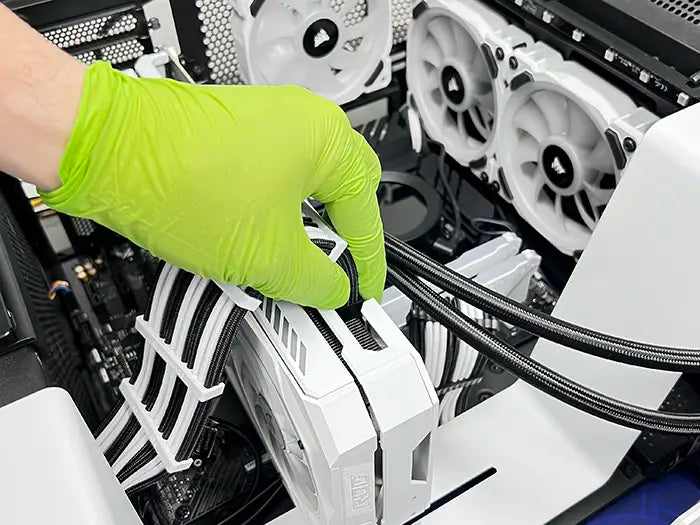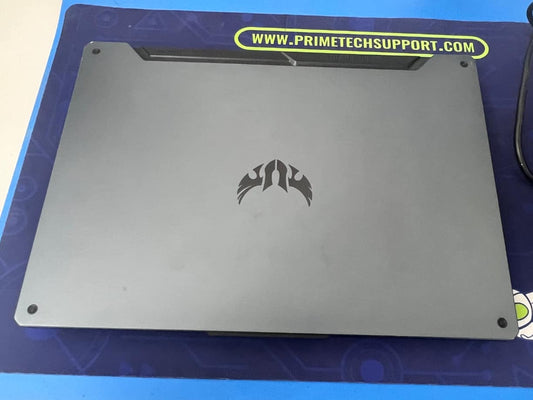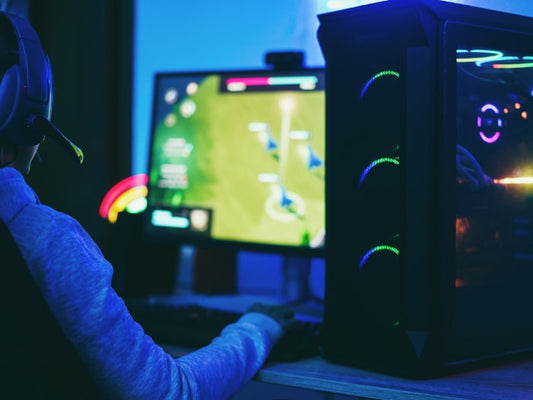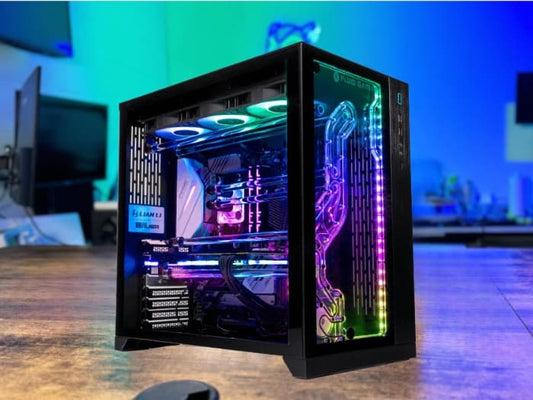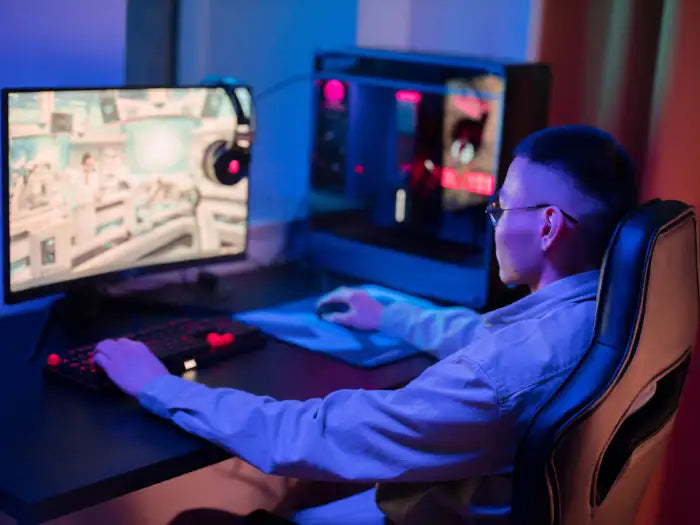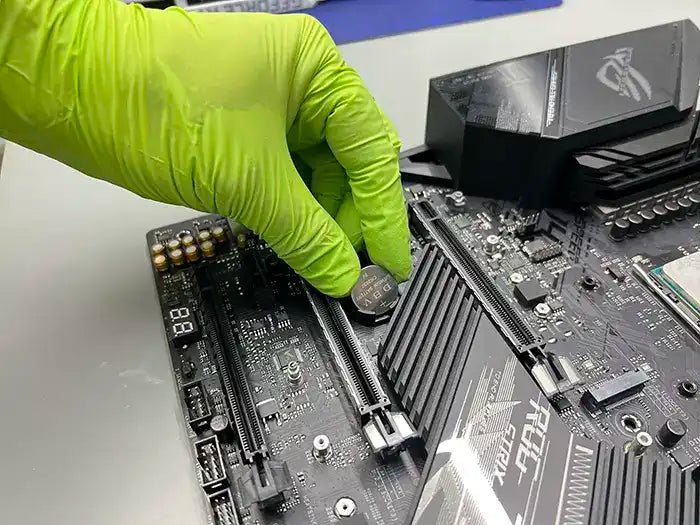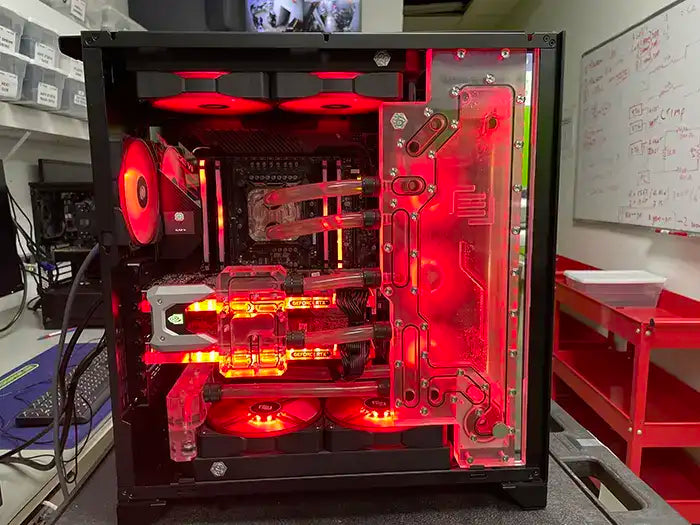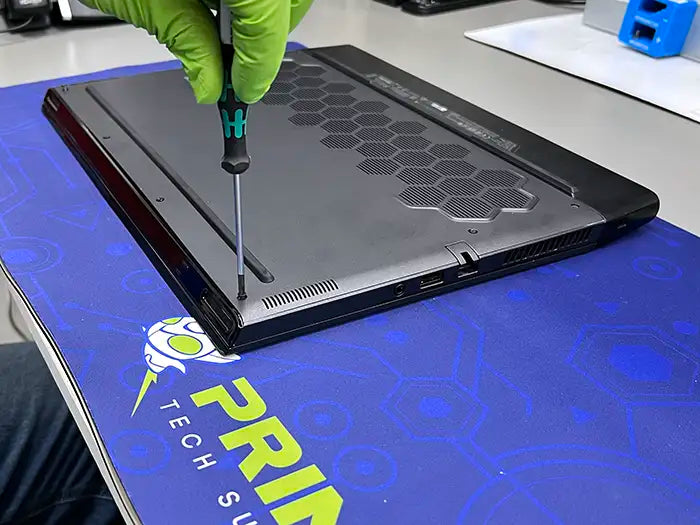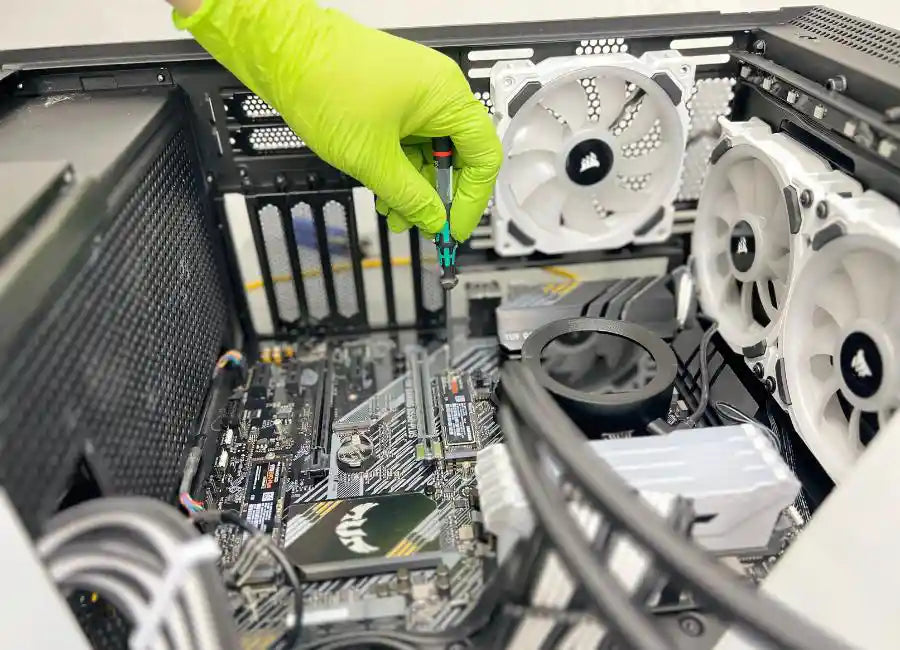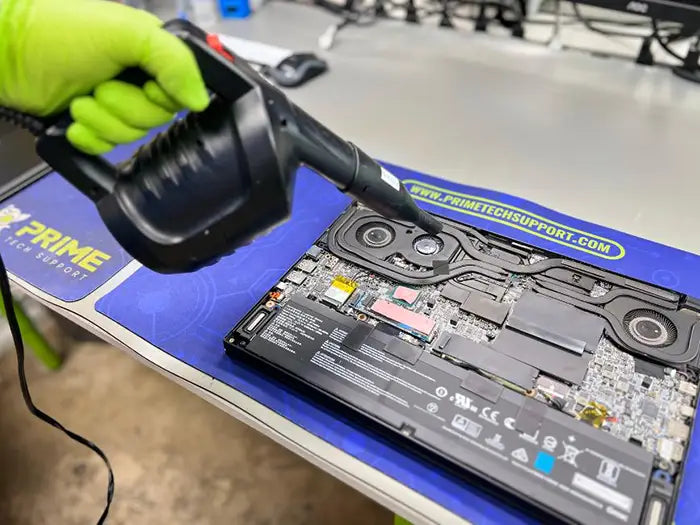Tech Glossary Unlocked: Master PC Concepts with Prime Tech in Miami
Who Is This Article For?
Beginners: This article offers basic guidance in simple terms for those new to PCs.
The realm of computers and digital technology is replete with specialized terminology, reflecting the intricate and evolving nature of this field. To navigate and comprehend this complex landscape, whether you're a seasoned professional, an enthusiastic gamer, or simply a curious learner, familiarizing yourself with the jargon is crucial. This comprehensive glossary serves as a key to unlocking the world of computer technology, offering clear and concise definitions of critical terms related to computer components, performance, and monitor panel technologies.
Covering core components such as CPUs and GPUs, which are the powerhouses of computational systems, to the subtleties of monitor panel technologies like IPS, OLED, and TN, this glossary is crafted to provide a foundational understanding of these terms. It also includes explanations of essential peripherals and concepts in computer support, such as SSDs, UPS, and virtualization, crucial for the smooth and efficient operation of computer systems.
How To Search on This Glossary?

Source: Prime Tech Support
Whether you're using a PC or a Mac, searching for content across web browsers like Chrome, Edge, and Safari follows a similar approach with minor differences.
Chrome and Edge (PC and Mac)
Activation: On both Chrome and Edge, irrespective of the operating system, use ‘Ctrl+F’ on a PC or ‘Cmd+F’ on a Mac to open the 'Find' bar.
Searching: Type your search query into the 'Find' bar.
Navigating Results: The browser highlights all instances of your query on the webpage. Use the arrows in the search box to move between matches.
Safari on Mac:
Activation: In Safari, use ‘Cmd+F’ to activate the search function.
Searching: Type your search term in the search bar that appears at the top right of the Safari window.
Navigating Results: Safari will highlight matching terms on the page, and you can jump between them using the search box arrows.
Glossary

Source: Prime Tech Support
This combined glossary not only clarifies technical language but also empowers users to make well-informed decisions, whether they're upgrading their PC, configuring a gaming setup, or solving technical issues. It's an invaluable reference guide for anyone eager to enhance their understanding in the dynamic and rapidly evolving world of computer technology.
AIO Cooler or All-In-One Cooler:

Source: Prime Tech Support
Is a type of liquid cooling system for computers that is self-contained and typically easier to install than traditional custom water cooling setups. The key components of an AIO cooler include:
API (Application Programming Interface): A set of routines, protocols, and tools for building software and applications. See more.
Aspect Ratio: The ratio of the width to the height of the screen. Common aspect ratios are 16:9 (widescreen) and 21:9 (ultrawide).
Backlight Bleed: A term that refers to light leaking from the edges or corners of a display. It is most noticeable when viewing dark screens in a dark environment.
BIOS (Basic Input/Output System): Firmware used to perform hardware initialization during the booting process and to provide runtime services for operating systems and programs. See more
CACHE: A smaller, faster memory component in a CPU that stores copies of data from frequently used main memory locations. It helps in speeding up data access times. See more.
Color Gamut: This term refers to the range of colors that a monitor can display. Wider color gamut offer more vibrant and diverse colors.
Contrast Ratio: The ratio of the luminance of the brightest color (white) to that of the darkest color (black) that the monitor is capable of producing. A higher contrast ratio means better picture quality.
Cooling (PC):

Source: Prime Tech Support
Refers to the process of removing excess heat from computer components to prevent overheating. It encompasses air and liquid cooling systems, using fans, heat sinks, and sometimes liquid-based radiators, ensuring optimal performance and longevity of CPUs, GPUs, and other heat-generating parts in a computer system. See more
CPU (Central Processing Unit): The primary component of a computer that performs most of the processing inside the computer. Often referred to as the brain of the computer, it handles instructions and computations. See more
DDR4 (Double Data Rate 4): A type of RAM that offers higher transfer rates and lower voltage requirements compared to its predecessors. It's used in most modern computers. See more
DDR5 (Double Data Rate 5): The latest generation of RAM, offering even higher speeds and efficiency than DDR4. It's increasingly being adopted in new computer systems. See more
Efficiency Core: A CPU core designed to handle less demanding tasks. It consumes less power and helps in improving overall energy efficiency.
Ethernet: A system for connecting a number of computer systems to form a local area network, with protocols to control the passing of information and to avoid simultaneous transmission by two or more systems.
Firewall: A network security system that monitors and controls incoming and outgoing network traffic based on predetermined security rules.
FPS (Frames Per Second): A measure of how many frames a graphics processing unit can display in one second. Higher FPS indicates smoother video and game graphics. See more
GPU (Graphics Processing Unit):

Source: Prime Tech Support
A specialized processor primarily designed to accelerate graphics rendering. GPUs are used in embedded systems, mobile phones, personal computers, workstations, and game consoles. See more
HDD (Hard Disk Drive): A traditional data storage device that uses mechanical platters and a moving read/write head to access data. See more
HDR (High Dynamic Range): A technology that increases the range of luminance levels on your display, allowing for brighter whites and deeper blacks. It enhances the overall picture quality by improving colors and contrast. See more
Heat Sink: A passive heat exchanger that cools a device by dissipating heat into the surrounding air.
IPS (Instructions Per Second): A measure of a computer's processor speed. It indicates how many instructions the CPU can execute per second. This metric is related to but different from IPC.
IPS Display Type (In-Plane Switching): A type of LED display panel technology known for its high color accuracy, consistency, and wide viewing angles. They are favored by professionals in photography and graphic design. See more
I/O (Input/Output): Refers to any program, operation, or device that transfers data to/from a computer and to/from a peripheral device.
IPC (Instructions Per Cycle): A measure of a CPU's efficiency, indicating how many instructions a CPU can execute in a single clock cycle. Higher IPC indicates better performance.
LAN (Local Area Network): A network that connects computers and devices in a limited geographical area such as a home, school, or office building.
LCD (Liquid Crystal Display): A type of display used in monitors and televisions. It uses liquid crystals to produce images. LCDs are known for their energy efficiency and quality display. See more
LED (Light Emitting Diode): A type of LCD screen that uses LED lighting as a backlight, instead of the traditional cold cathode fluorescent (CCFL) lighting. LED displays are thinner, more energy-efficient, and provide better contrast ratios than CCFL displays. See more
Low 1%: In performance metrics, particularly for gaming, it refers to the lowest 1% of frame rates encountered during gameplay. It's used to measure how well a system can handle the most demanding moments. See more
Malware: Malicious software designed to harm, exploit, or disable computers, systems, or networks.
Motherboard: The main printed circuit board (PCB) in a computer that connects and communicates between various components like the CPU, RAM, and GPU. See more
OLED (Organic Light Emitting Diodes): A type of display technology that does not require a backlight, as the pixels emit their own light. Known for their deep blacks, vibrant colors, and energy efficiency. See more
Overclocking: The practice of increasing the clock speed of a computer's CPU or GPU beyond the manufacturer's specifications for enhanced performance. See more
PCIe (Peripheral Component Interconnect Express): A high-speed interface standard for connecting hardware devices to a computer's motherboard. See more
Performance Core: In the context of CPU architecture, it refers to a core designed for maximum performance and handling demanding computational tasks. See more
Pixel Pitch: The distance between the centers of two adjacent pixels. A smaller pixel pitch indicates a higher resolution, as more pixels are packed into the same space.
PSU (Power Supply Unit): An internal hardware component that supplies power to a computer by converting electrical energy from a power source into usable power for the internal components of the computer. See more
RAM:

Source: Prime Tech Support
RAM is an acronym that stands for "Random Access Memory". It's used to store relatively small amounts of data that the CPU and GPU need to access quickly, making sure everything on your computer runs smoothly. See more
RAM MHz (Random Access Memory Megahertz): The frequency in megahertz at which the RAM operates. Higher frequencies allow for quicker access to data stored in the memory, improving overall system performance. See more
Refresh Rate: Measured in Hertz (Hz), this is the number of times per second that the screen refreshes its image. Higher refresh rates result in smoother motion on the screen and are particularly important for gaming. See more
Refresh Rate in Graphics: The number of times in a second that a display hardware updates its buffer. A higher refresh rate results in smoother motion for moving images. See more
Resolution: This refers to the number of pixels that can be displayed on the screen. Common resolutions include 1080p (Full HD), 1440p (Quad HD), and 4K (Ultra HD). See more
Response Time in Displays: Measured in milliseconds (ms), this indicates how quickly a pixel can change from black to white (or from one shade of gray to another). Lower response times mean less motion blur and are important for fast-paced gaming. See more
RJ45: A type of connector commonly used for Ethernet networking.
SSD (Solid State Drive): A type of mass storage device similar to a hard disk drive (HDD) but using flash memory, providing faster data access speeds and reliability. See more
TN (Twisted Nematic): One of the most common types of LCD panel technologies, known for their fast response times, making them popular for gaming. However, they have poorer color reproduction and viewing angles compared to IPS and VA panels. See more
Threads: Threads are sequences of instructions within a program that can be executed independently of one another. In CPUs, threads refer to the number of independent processes that the CPU can handle simultaneously. See more
UPS (Uninterruptible Power Supply): A device that provides battery backup power when the electrical power fails or drops to an unacceptable voltage level. It ensures continuous power supply for a short time to connected devices. See more
USB (Universal Serial Bus): An industry standard for cables, connectors, and protocols for connection, communication, and power supply between computers, peripherals, and other computers.
VA (Vertical Alignment): A type of LCD panel technology that offers higher contrast ratios and better colors than TN panels, but has slower response times. VA panels are known for their deep blacks. See more
Virtualization: The creation of a virtual (rather than actual) version of something, such as a hardware platform, operating system, storage device, or network resources. See more
VRAM (Video Random Access Memory): Specialized RAM used by GPUs to store image data that is to be displayed on the monitor. See more
WAN (Wide Area Network): A telecommunications network that extends over a large geographical area for the purpose of computer networking.
Viewing Angle: The maximum angle at which images on the monitor can be viewed with acceptable visual performance. Wider viewing angles are better as they allow the screen to be viewed from different positions without losing image quality.
Sources
- Wikipedia - API
- Prime Tech Support - Understanding the Role of the BIOS in a Gaming PC
- TechTarget - Definition of Cache
- Prime Tech Support - CPU Effect on Gaming
- Prime Tech Support - Why RAM Matters for Gamers
- Prime Tech Support - Optimal RAM for Gaming
- Prime Tech Support - How to Choose an SSD for Gaming
- Intel - 5 Reasons to Overclock Your Next PC
- Prime Tech Support - Best Gaming CPUs in 2023
- Prime Tech Support - Best PSU Brands for Gamers
- Wikipedia - Motherboard
- IBM - Virtualization
- TechTarget - Definition of Video RAM
- Prime Tech Support - Choosing UPS for a Gaming PC
SAME-DAY REPAIRS
Gaming PC Diagnostic
Fast tech support for Gaming Computers. We exceed customer expectations and ensure satisfaction.
